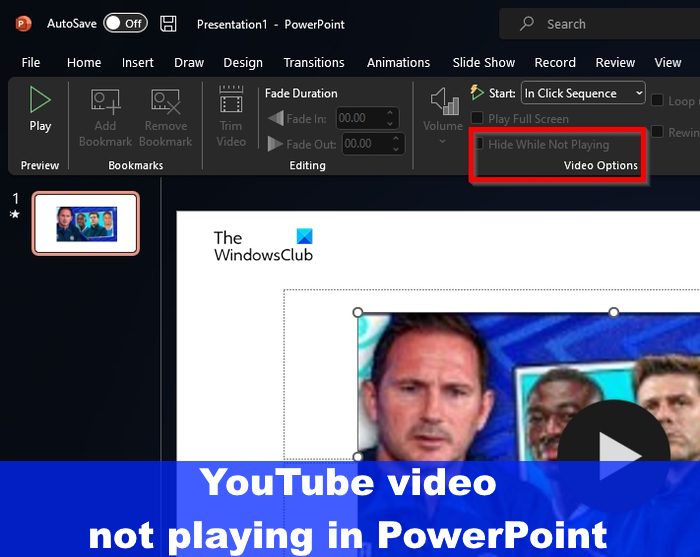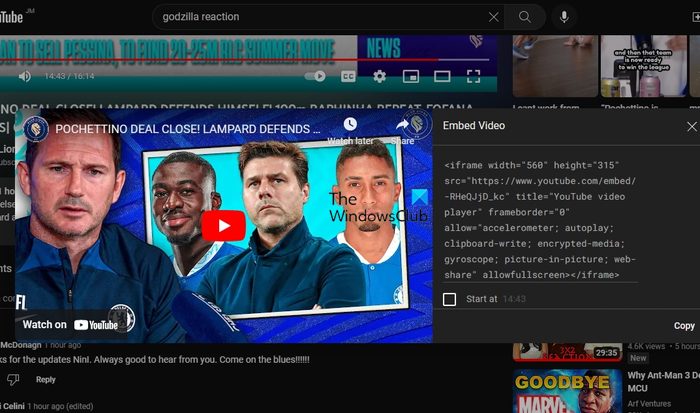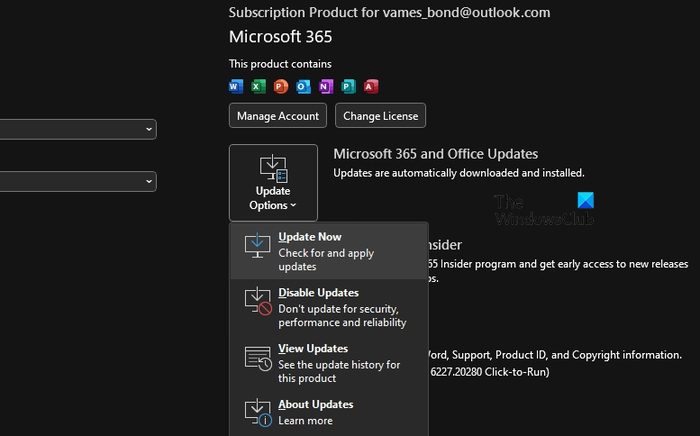Folks can upload videos to a Microsoft PowerPoint presentation, but those who might not have a particular video saved on their computer can choose to add a YouTube video instead. Now, there are times when YouTube videos will fail to play in PowerPoint after being added to a presentation. This is a problem, no doubt, especially if the video doesn’t play during a live presentation. So, the question is, can this problem be solved? It sure can, and we suggest double-checking if everything works before going live.

How to fix a YouTube Video not playing in PowerPoint
If your YouTube video is not playing in PowerPoint, then check the internet connection along with the embedded code. Also, ensure Office is updated to the newest version.
- Check your internet connection
- Check the embed code of the YouTube video
- Update your version of Microsoft Office
- Save only in new PowerPoint format
- Reveal video if hidden
1] Check your internet connection
The first thing you should do here is to check the quality of your internet connection. We believe at least one of the solutions listed in the linked post will help your YouTube video get back on track.
2] Check the embed code of the YouTube video

If the internet connection is not the problem, then maybe the issue here has much to do with the embedded code for the YouTube video.
First, check to ensure the YouTube video added to your PowerPoint presentation was not done so via a link. It should always be the embedded code every time since PowerPoint is not able to transform YouTube video links into streaming content.
- To verify, please visit the YouTube website via your favorite web browser.
- Locate the video you want to add to your presentation.
- From the video page, click on the Share button that is located under the video player.
- Next, click the Embed button from the share options window.
- Copy the code from the Embed Video screen.
- Return to the PowerPoint presentation and click on Insert > Video > Online Videos.
- Paste the relevant embed code into the URL box, and that’s it, the video will now be added directly to your slide.
3] Update your version of Microsoft Office

The next step to take here is to update Microsoft Office. Doing this will also update PowerPoint since it is part of the Office Suite of apps.
- In order to update Microsoft Office, you must open one of the Office apps. For example, open PowerPoint right away.
- Click on File, then select Account.
- Go to Update Options, then click on it.
- From the dropdown menu, please click on Update Now, then wait.
4] Save only in new PowerPoint format
Here’s the thing, PowerPoint along with all other Office apps make it possible for users to save in older formats. This is done to improve compatibility, but it doesn’t make sense to do this when a YouTube video is added to a presentation.
If you plan on adding a video to your presentation, then we suggest always saving it in the default format, which is PPTX. Should you do otherwise, then there is a chance the file could become corrupt, and as such, the video will fail to load as intended.
5] Reveal video if hidden
PowerPoint has a feature where folks can hide videos. In some situations, users may accidentally hide the YouTube video they added to a presentation.
- To unhide a hidden video, you must open PowerPoint.
- Select the video on the relevant slide.
- Click on the Playback tab via the ribbon.
- Look to the Video Options area for Hide While Not Playing.
- If the option that reads, Hide While Not Playing is not unchecked, then please do so.
READ: How to make a Photo Slideshow in PowerPoint
Why is my video not playing automatically in PowerPoint?
Maybe the video is not set to automatically playback, so we have to change that. Go to Video Tools, and click the Playback tab. Next, to Start, click the down arrow, and select Automatically.
TIP: Subscribe to TheWindowsClub Video Channel.
Why is my PowerPoint not playing audio or video?
There are some common causes why your videos and audio fail to work in PowerPoint. It can boil down to poor internet connection, issues with the operating system, or maybe it has much to do with the video itself than anything else.